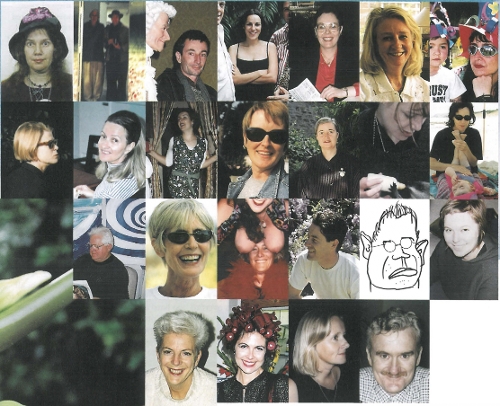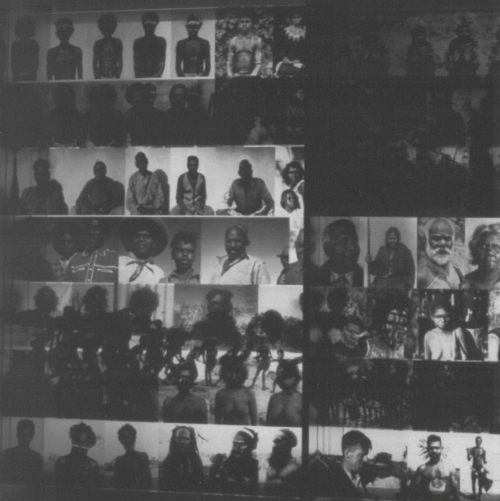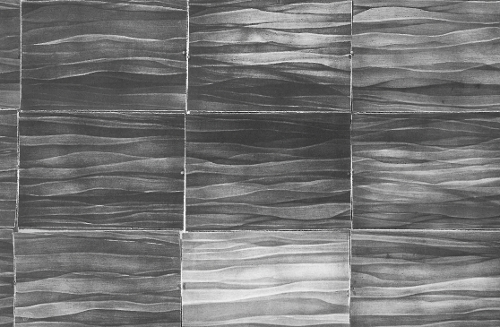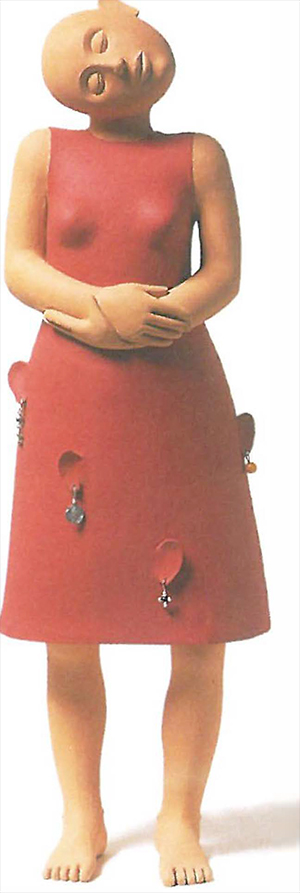
It is timely that Dr Norris Ioannou has curated these two exhibitions as there has not been an exhibition focusing on SA ceramics since 1984. Here two collections of SA historical work sit alongside a show of contemporary works informing the viewer about the derivations of current practice.
From 1997 to 1999 the University of SA received two benefactions from Dr RJ Lyons (including works from the mid 1800s to the 1980s) and Dr D Chamberlain (of particular interest are works collected from the 1940s to the 1960s). Ioannou has played a part in the Lyons collection, working closely with Bob Lyons on collecting, after returning from the UK with a new sense of where this early Australian work was placed in the ceramic tradition here. As he points out in his catalogue essay, many socio-cultural aspects of Australian life are revealed in the work in this collection.
The Chamberlain Collection is a more eclectic group of works from potteries in Adelaide, Tasmania, Victoria and Sydney dating from the 1930s to the 1960s.
Rich traditions can be traced in these exhibitions. Due to the concentration of work being produced in South Australia from 1836 on, a unique style developed which is identifiably South Australian. British skills in brickmaking and German pottery techniques informed the work and the soil type and wood that was burnt to fire the kilns affected it in a technical sense. In a spiritual sense this landscape/place slowly filtered into the consciousness of the makers. Ioannou asks us to consider whether there is, today, an identifiable South Australian ceramic style or whether contemporary work in SA has evolved through being more broadly informed through global trends.
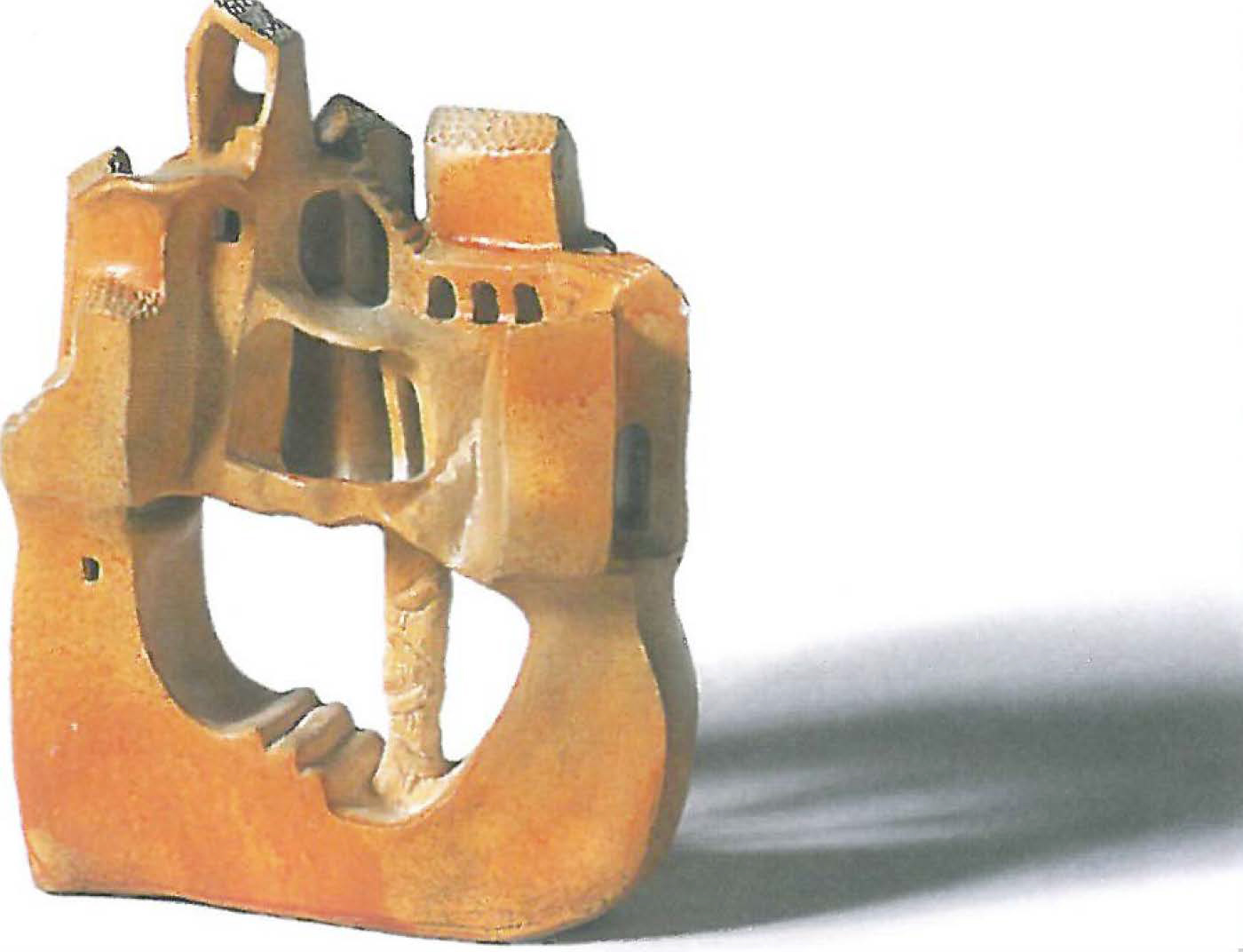
Lincoln Kirby Bell, the youngest ceramist in this exhibition has produced work which is exuberant and iconic in its use of state emblems. The work sits aptly near other commemorative works in the historical part of the exhibition; for example his SA Coat of Arms has links to the Bosley Gumtree plaques that commemorate the centenary of the founding of SA in 1836. It is bold work and the techniques used suit the purpose.Trained at the Jam Factory, Lincoln's earlier stoneware bowls accessed early ceramic traditions and were compared to Gladys Reynell's slip-decorated ware of the 1920s. I would expect to see some of this work enter the State collection.
Jeff Mincham who has had innumerable one man shows since 1976 and is represented in over 50 public and private collections, is amply represented. Renowned as a master of the raku genre he has worked his intense experiences of the Australian landscape into his lyrical pieces. Sidney Nolan, Fred Williams, Nikolaus Lang, Arthur Boyd and other artists 'talk' the same language in their work as does Milton Moon in his River Red Gums and in his recently shown (at Christine Abrahams) massive landscape platters. Like shards of the actual earth, they have all the rough, earthy, tough surfaces we associate with the Australian landscape.
On the other hand Tim Strachan and Liz Williams both work toward a pure ceramic aesthetic but have increasingly experimented, allowing outside influences in. More recently each has begun to add vibrant colour to their work - travel and experiencing other cultures leaves its mark. Williams' work has been influenced by classical Chinese ceramics and the innovative style of Californian artist, Paul Soldner, resulting in the sculptural forms we see today.
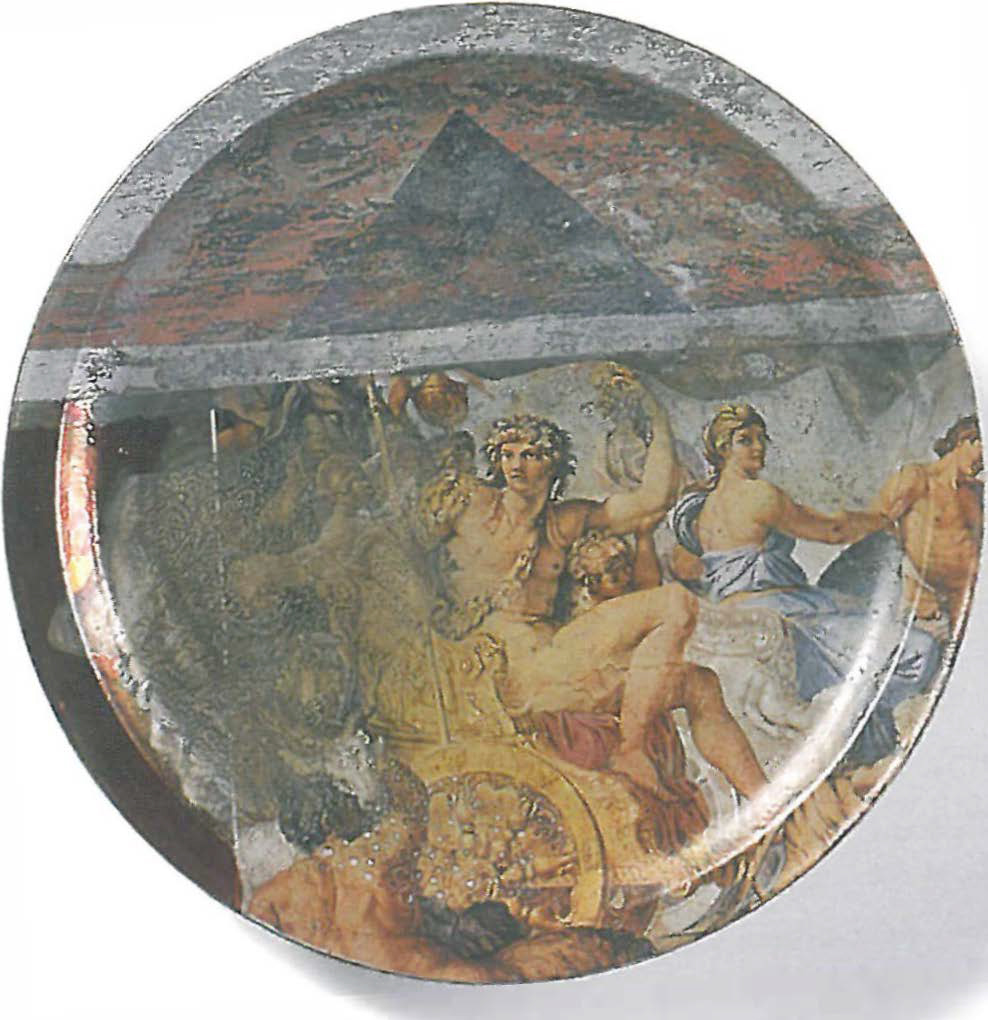
Ben Kypridakis, born in the USA, was appointed lecturer at the SA School of Art in 1963. His masterful throwing skills produce elegant porcelain vessels or platters to which he applies highly reflective lustre glazes. The bold flowing brushwork and tonal qualities he achieves are said to be reminiscent of sunsets. Other surfaces are achieved by the use of decals or multiple transfers combined with lustre glazes. I was surprised several years ago when I visited Kypridakis to find these skills had not been exposed regularly to a general audience in Adelaide.
Stephen Bowers has been more successful than others in exposing his work to an audience Australia-wide. His motifs are Australian fauna and flora, iconic buildings and characters out of popular culture. With his absolute mastery of techniques he is able to juxtapose background textures and foreground images while his knowledge allows him to pick through imagery such as shards of willow pattern, architectural features, fauna and flora, in so doing presenting a new language. The work is well placed in this show in that it references identifiably Australian 'things' and combines them with classic universal features.
Gerry Wedd has also given us a new visual language, identifiably South Australian, and his associations with Mambo have made his work widely available. Hearts, surfboards and dogs are some of the motifs featured on items like tea cups, rolling pins, bowls and tiles. These loaded iconographic images as well as text statements that he adds, make every piece a collector's item, although quite functional. We are seduced into reading the soft blue imagery in one way only to find our tea being poured into a vessel featuring a strong political message.
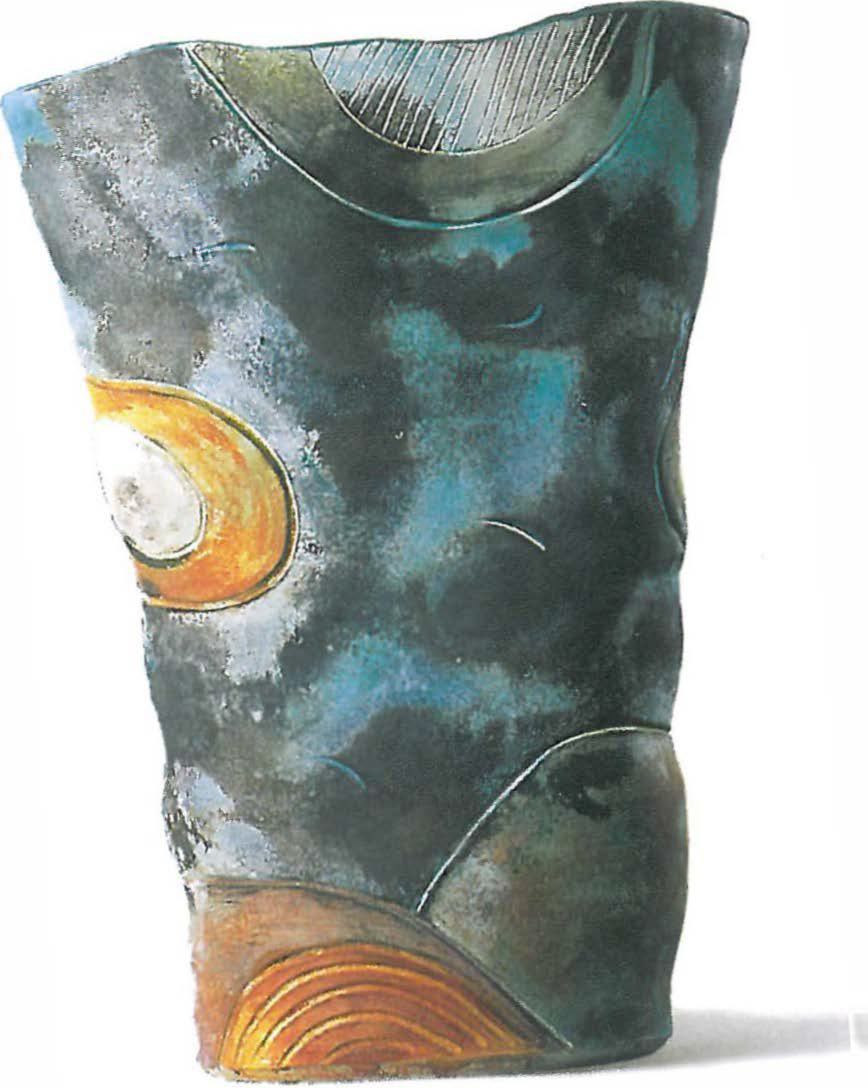
Silvia Stansfield migrated from Chile in 1969 and a re-working of pre-Columbian pottery forms is apparent in her handbuilt forms. Earthy tones are achieved through burnishing, ash glazes and colloidal slips. Although referring back to another place, this artist's work, being made here with local clay has been affected by place.
All of these contemporary works help us to reflect on our past in Australia and to see the continuous line of our ceramic tradition. The works are a cultural expression of who we are that could not be conveyed as richly in any other medium and while many of the works may be informed by global trends they are still unmistakably 'marked' as Australian.





